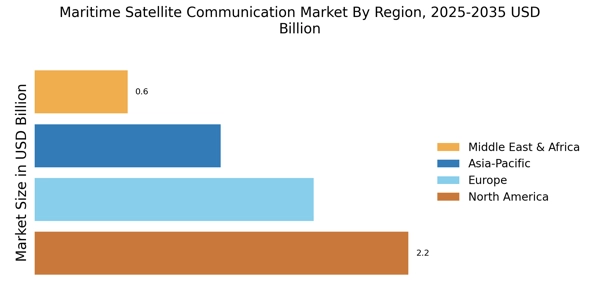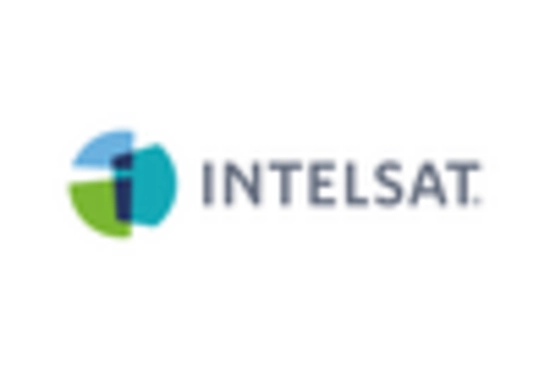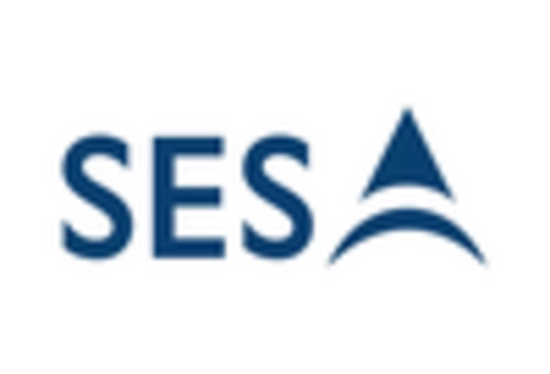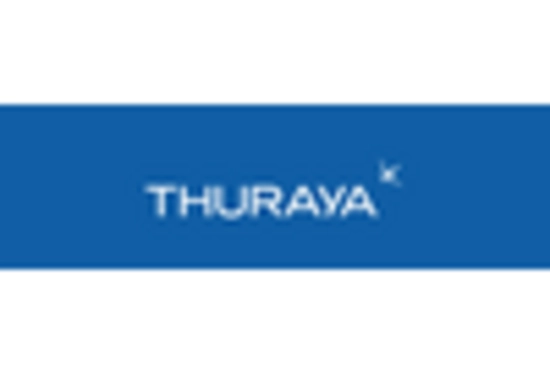Focus on Cybersecurity
In the Maritime Satellite Communication Market, the focus on cybersecurity has become increasingly critical. As maritime operations rely more on digital communication, the risk of cyber threats has escalated. The maritime sector has seen a rise in cyberattacks targeting communication systems, which can disrupt operations and compromise sensitive data. In response, companies are investing in advanced cybersecurity measures to protect their satellite communication systems. This trend is reflected in the growing market for cybersecurity solutions, which is projected to reach USD 1.2 billion by 2027 within the maritime sector. The emphasis on safeguarding communication networks not only enhances operational integrity but also builds trust among stakeholders, making cybersecurity a vital driver in the Maritime Satellite Communication Market.
Increased Demand for Connectivity
The Maritime Satellite Communication Market is witnessing an increased demand for connectivity across various maritime sectors. As shipping and maritime operations become more digitized, the need for reliable communication systems has escalated. This demand is particularly evident in sectors such as commercial shipping, offshore oil and gas, and fishing industries, where real-time data exchange is essential for operational efficiency. According to recent estimates, the demand for maritime satellite communication services is expected to reach a market value of USD 5 billion by 2026. This growth is fueled by the necessity for enhanced safety measures, regulatory compliance, and the integration of Internet of Things (IoT) technologies in maritime operations. Consequently, the push for seamless connectivity is a significant driver in the Maritime Satellite Communication Market.
Expansion of Maritime Trade and Operations
The Maritime Satellite Communication Market is poised for growth due to the expansion of maritime trade and operations. As global trade continues to increase, the demand for efficient communication systems in shipping and logistics is paramount. The rise in container shipping and the expansion of offshore activities, such as renewable energy projects, necessitate robust satellite communication solutions. Recent data indicates that the volume of maritime trade is expected to grow by 4% annually, further driving the need for reliable communication systems. This expansion creates opportunities for satellite communication providers to offer tailored solutions that meet the evolving needs of the maritime sector. Consequently, the growth of maritime trade and operations serves as a crucial driver in the Maritime Satellite Communication Market.
Regulatory Compliance and Safety Standards
The Maritime Satellite Communication Market is significantly influenced by regulatory compliance and safety standards. Governments and international organizations are increasingly mandating the use of satellite communication systems for safety and navigation purposes. Regulations such as the International Maritime Organization's (IMO) Global Maritime Distress and Safety System (GMDSS) require vessels to maintain reliable communication capabilities. This regulatory landscape compels maritime operators to invest in satellite communication technologies to ensure compliance. As of 2025, it is estimated that compliance-related investments in satellite communication systems will account for nearly 30% of the market growth. This focus on regulatory adherence not only enhances safety at sea but also drives technological advancements within the Maritime Satellite Communication Market.
Technological Advancements in Satellite Systems
The Maritime Satellite Communication Market is experiencing a surge in technological advancements, particularly in satellite systems. Innovations such as high-throughput satellites (HTS) and low Earth orbit (LEO) satellites are enhancing data transmission capabilities. HTS can provide significantly higher bandwidth, which is crucial for maritime operations that require real-time data. The introduction of LEO satellites is also transforming the landscape by offering lower latency and improved coverage. As of 2025, the market is projected to grow at a compound annual growth rate (CAGR) of approximately 10%, driven by these advancements. This evolution in technology not only improves communication efficiency but also reduces operational costs for maritime operators, making it a pivotal driver in the Maritime Satellite Communication Market.


















Leave a Comment